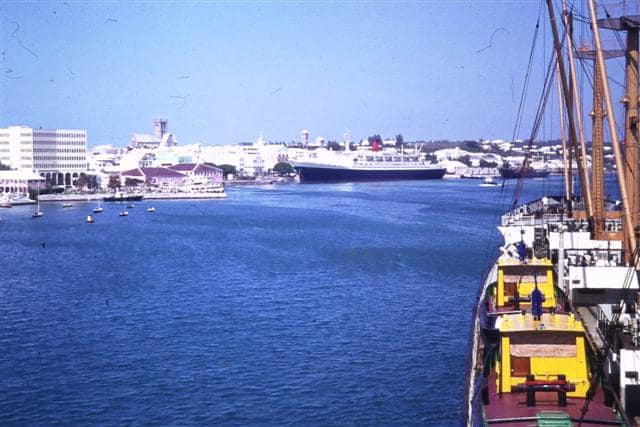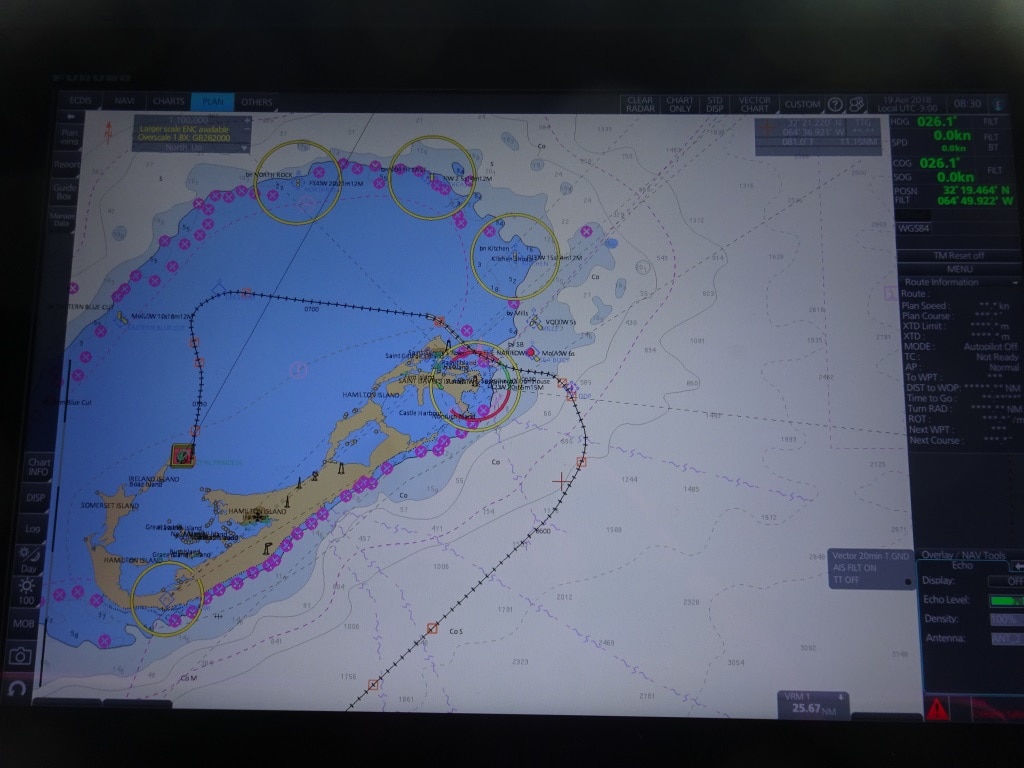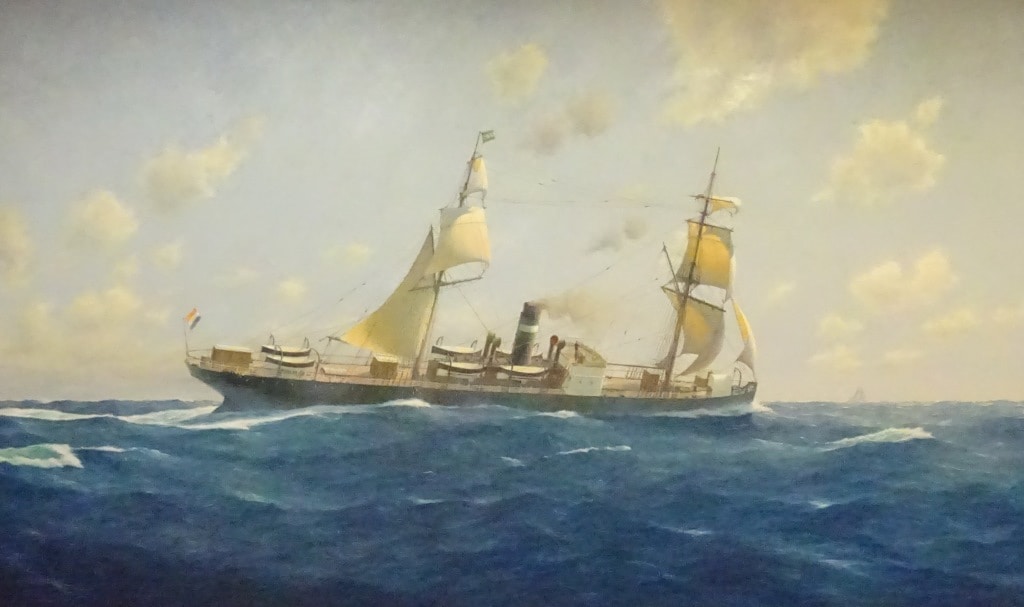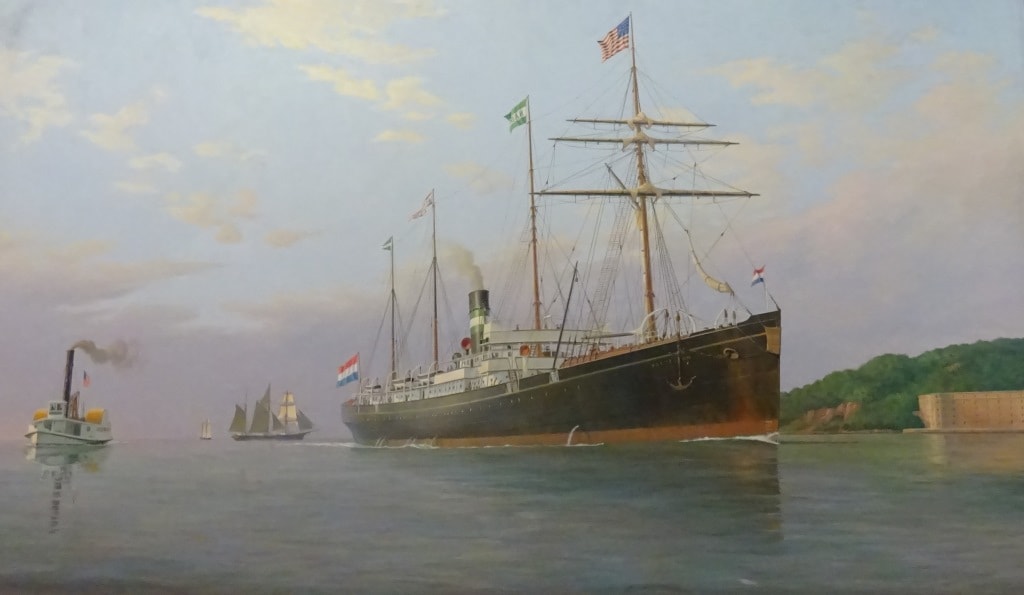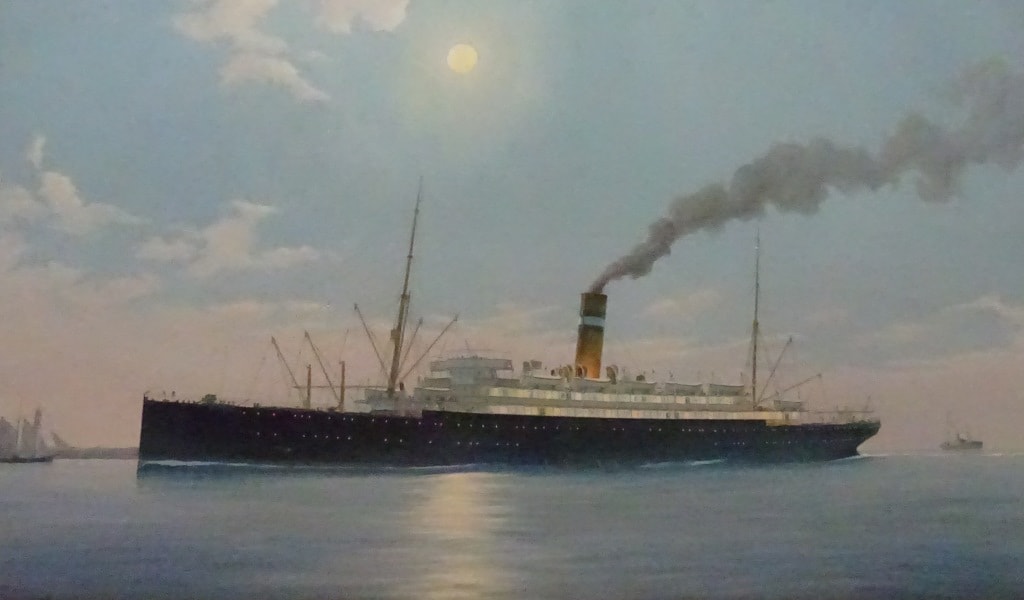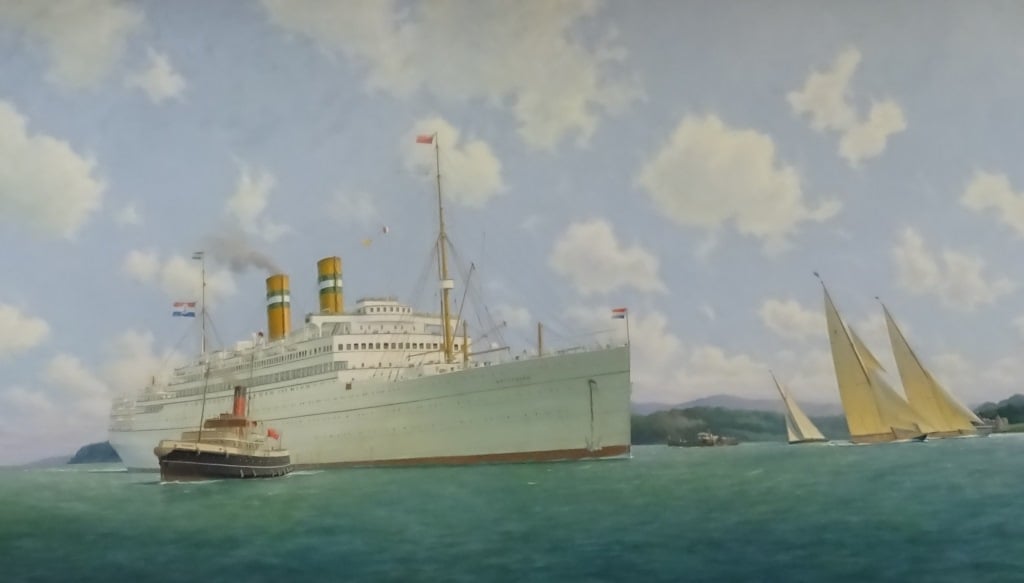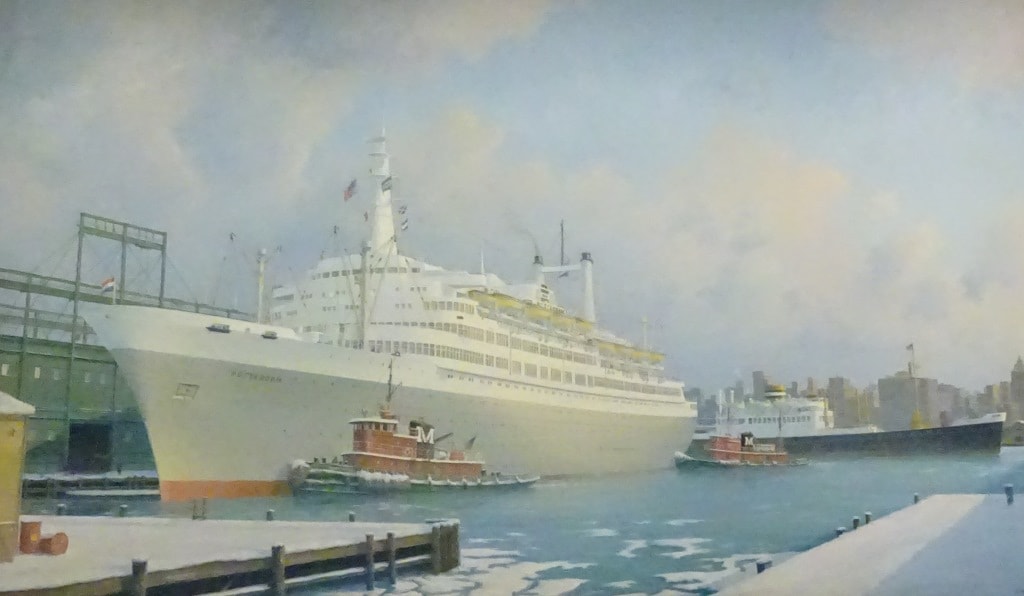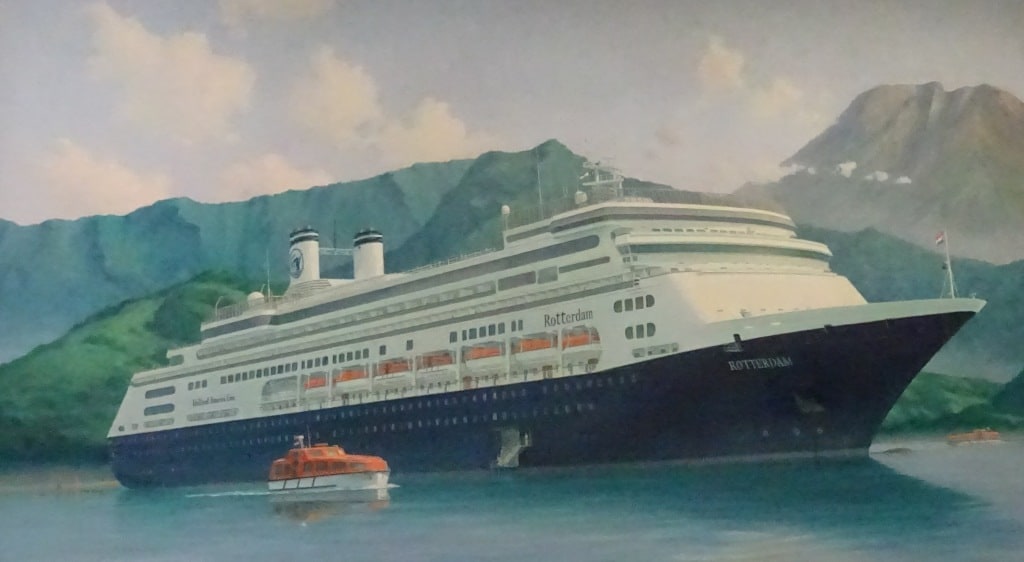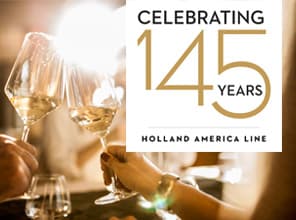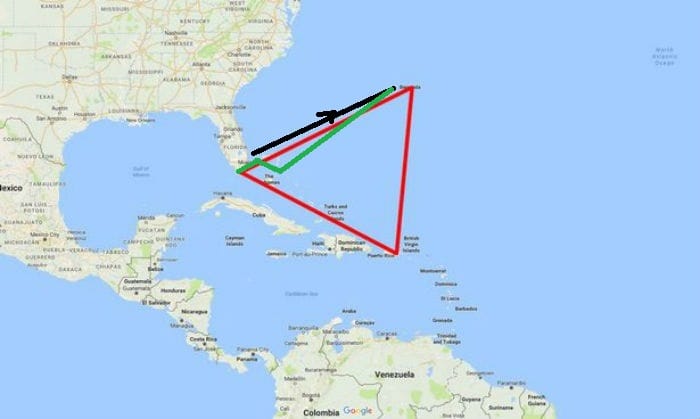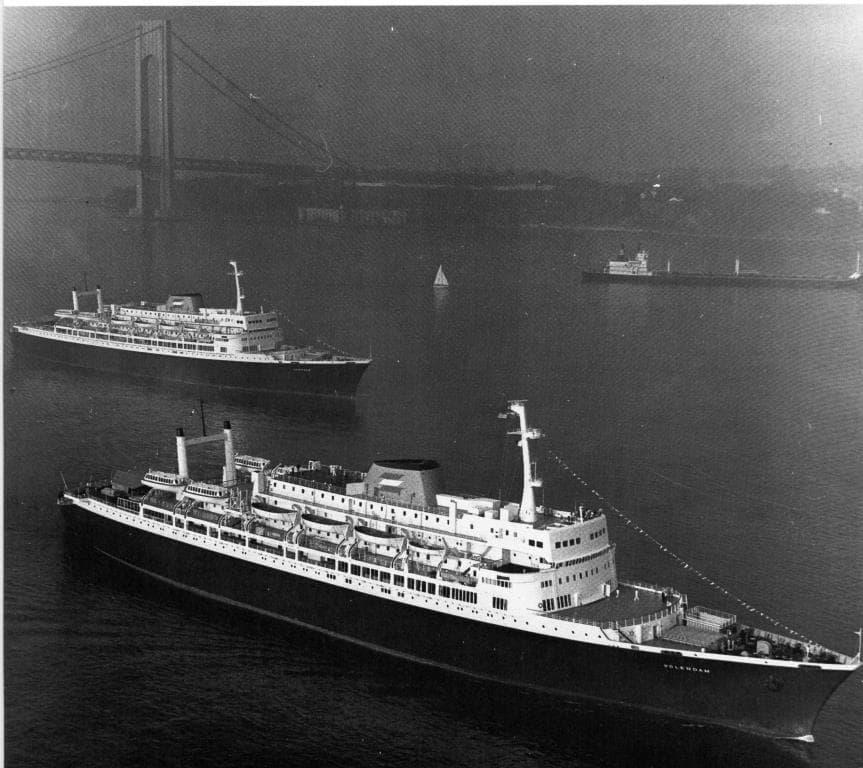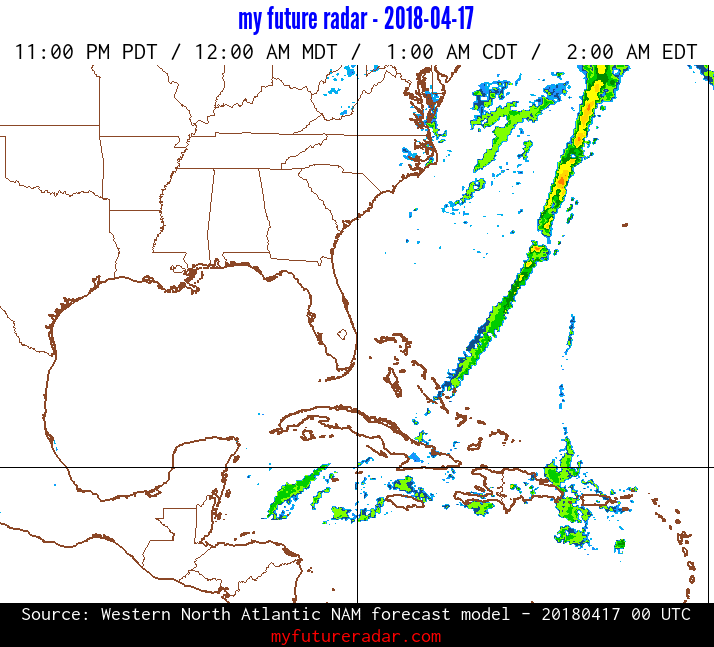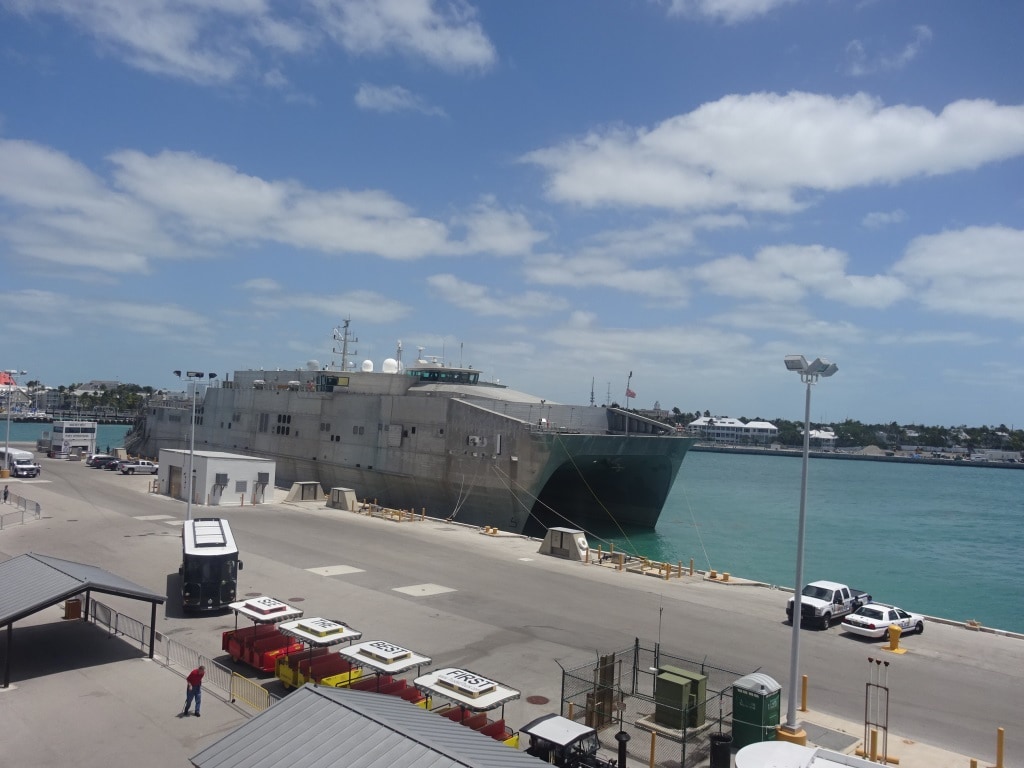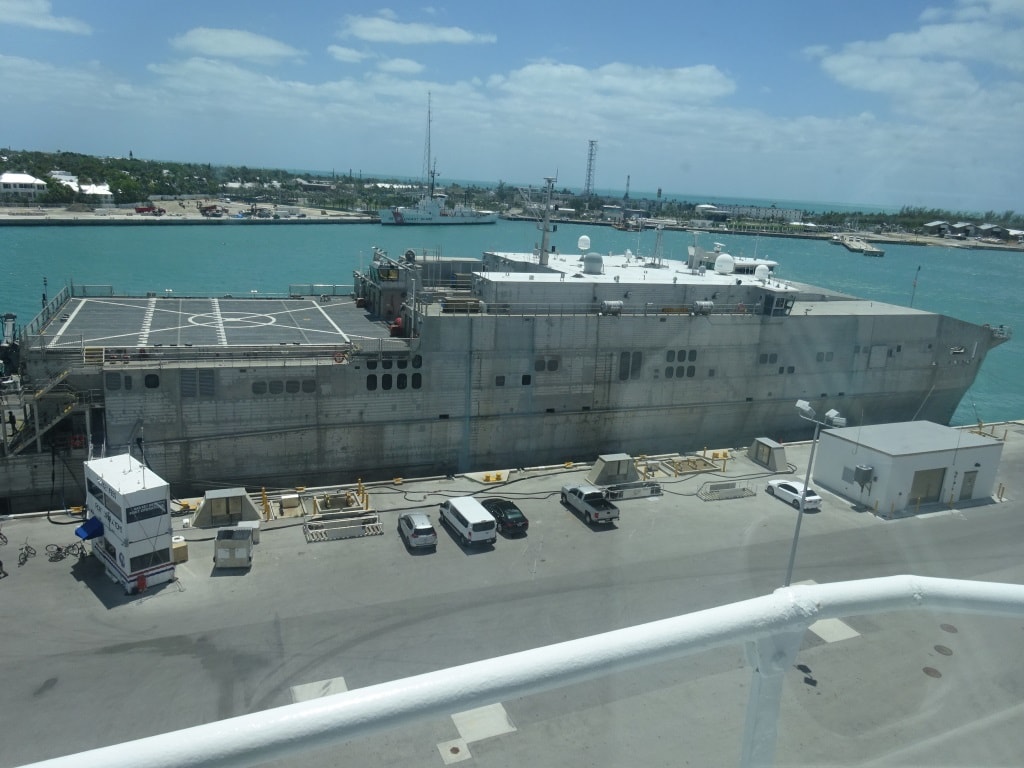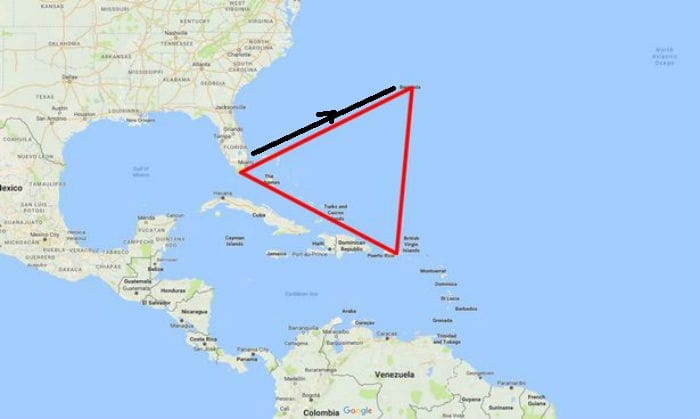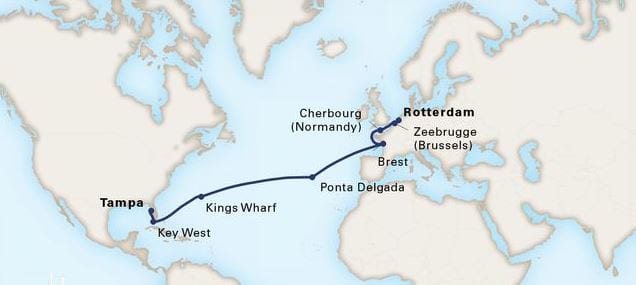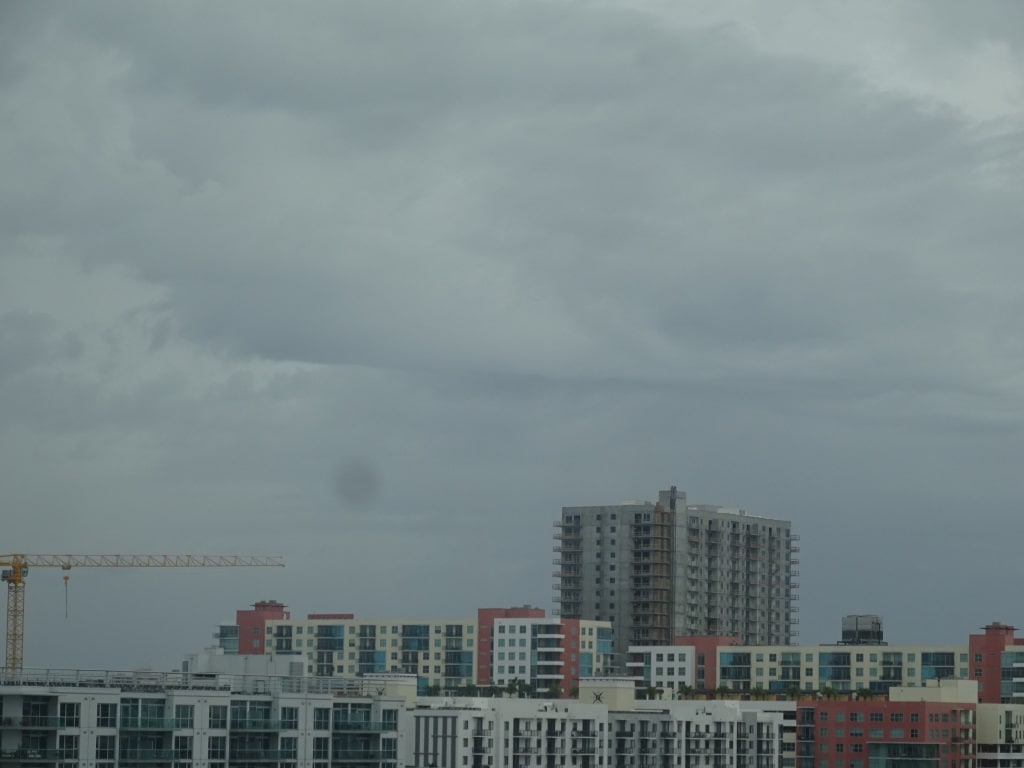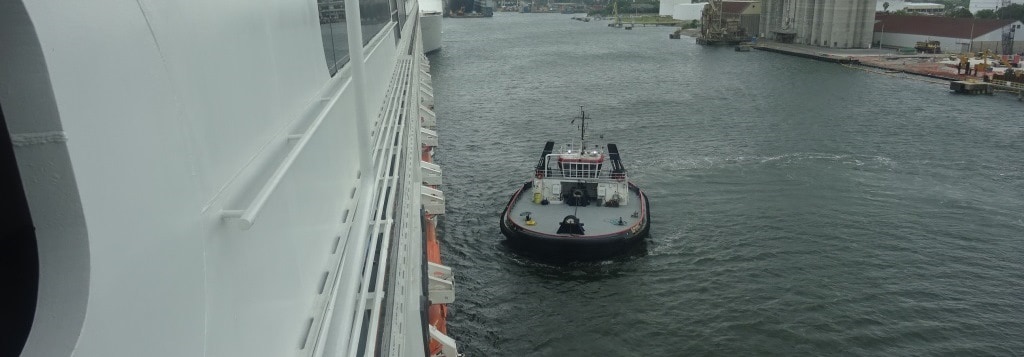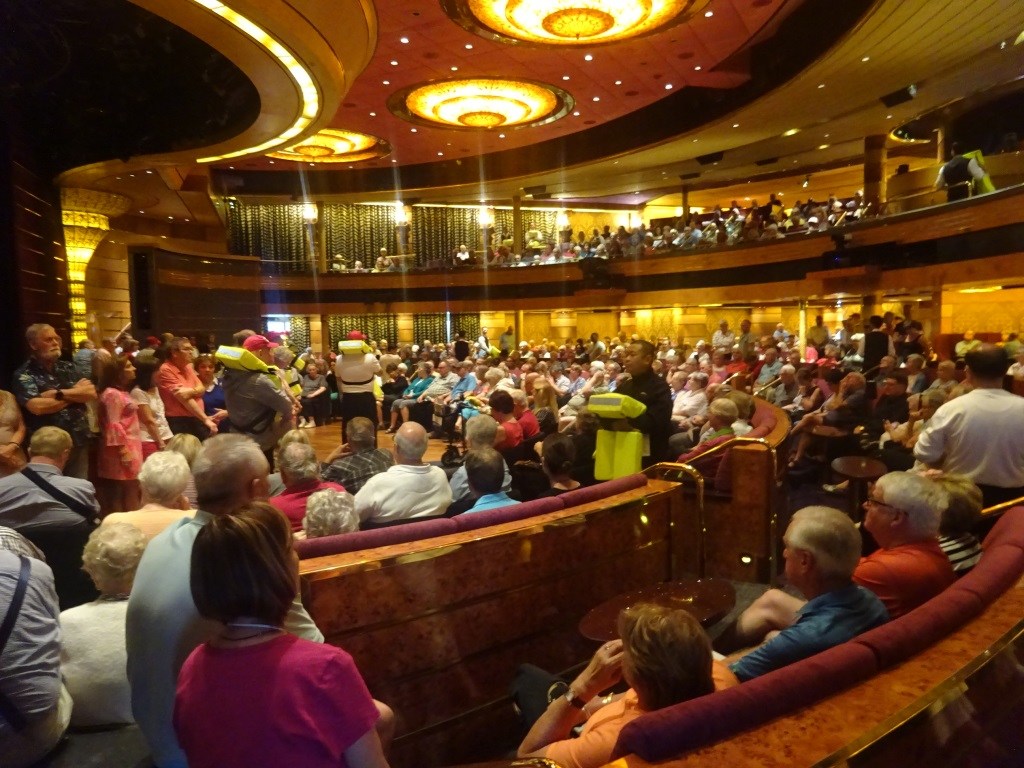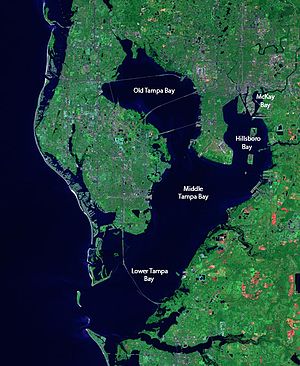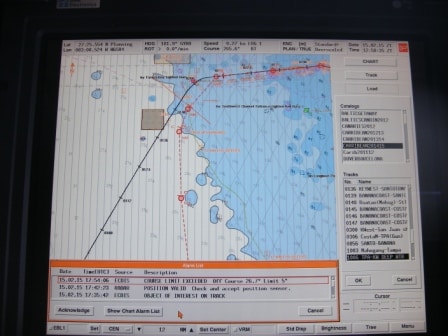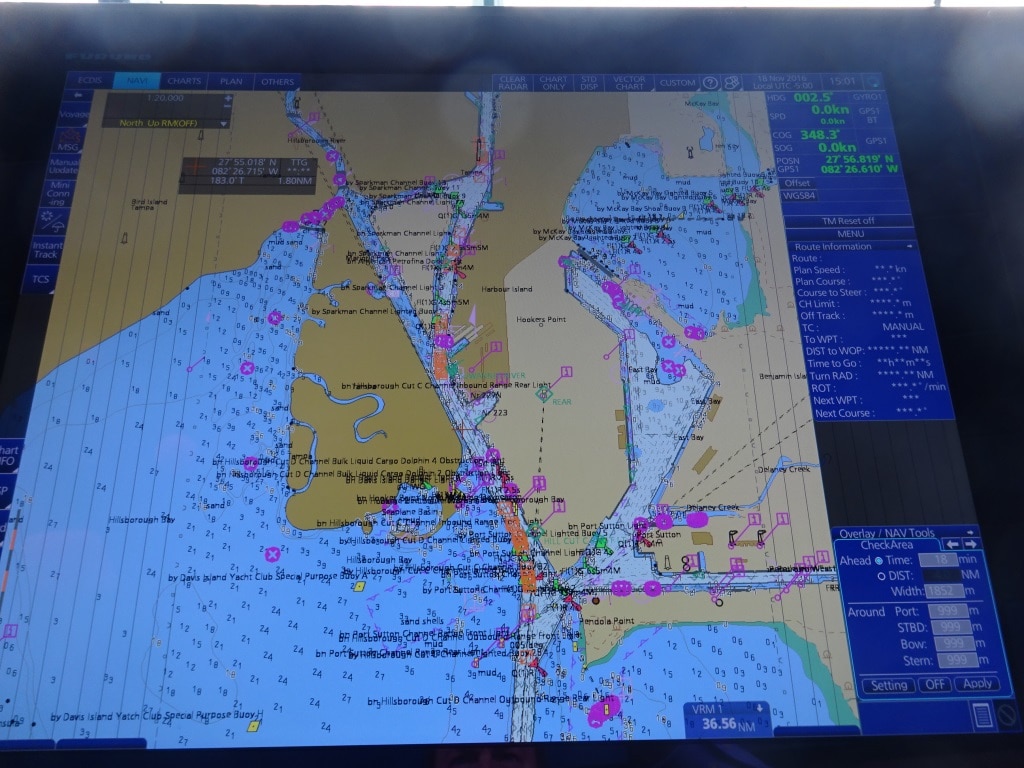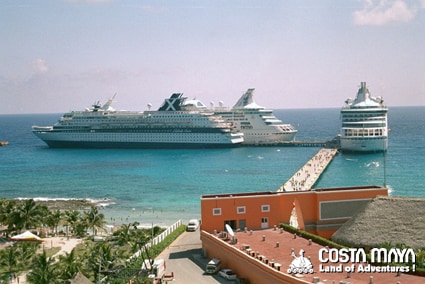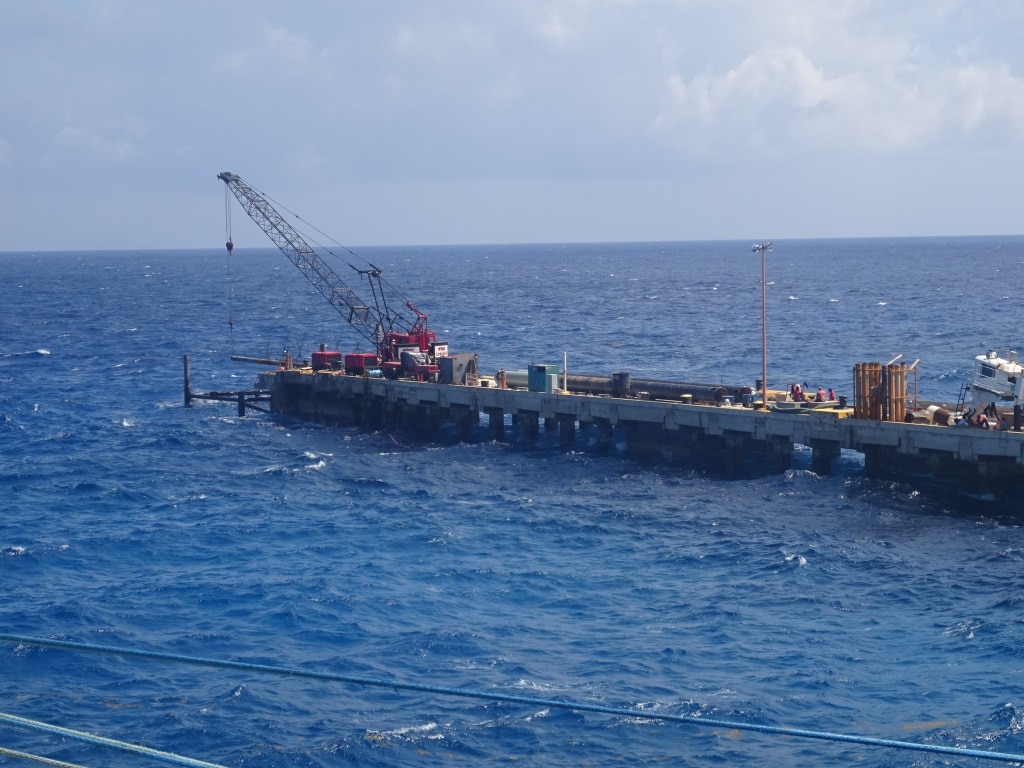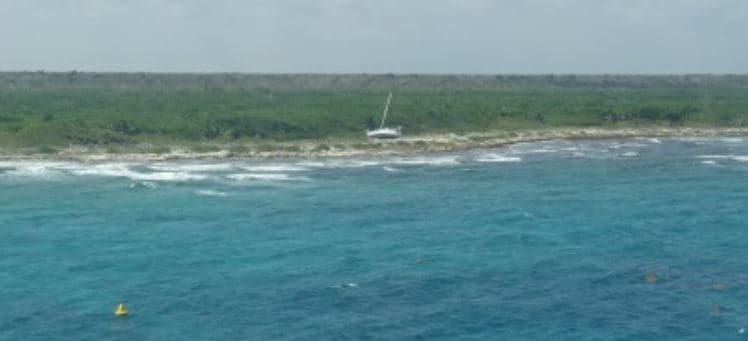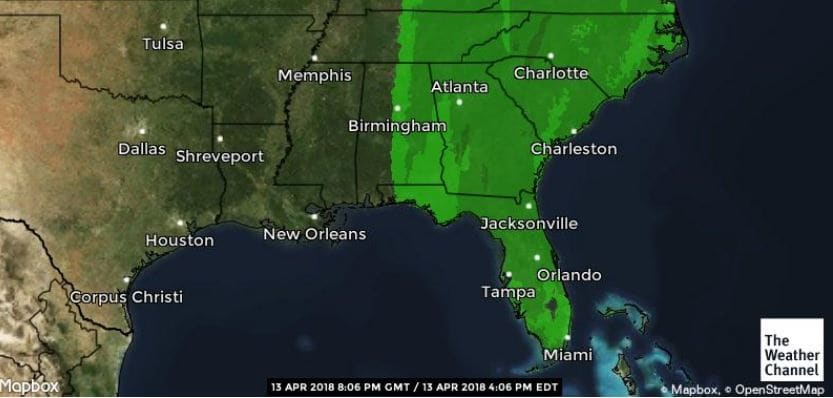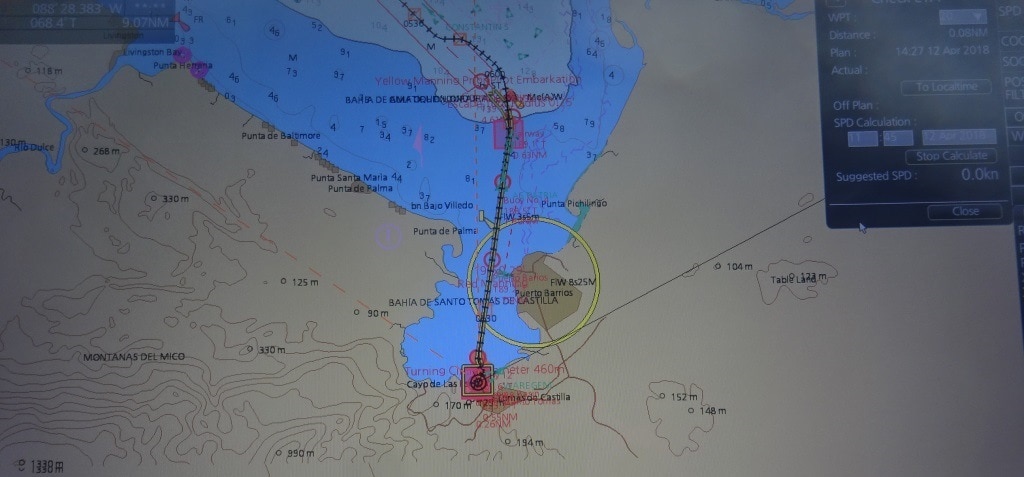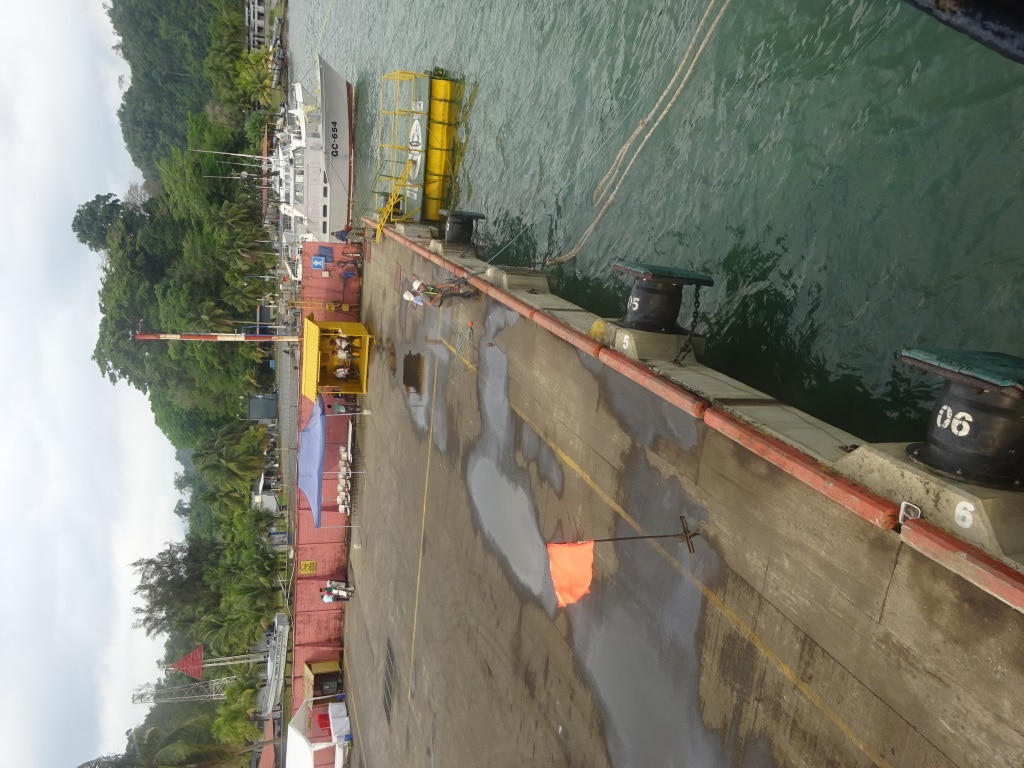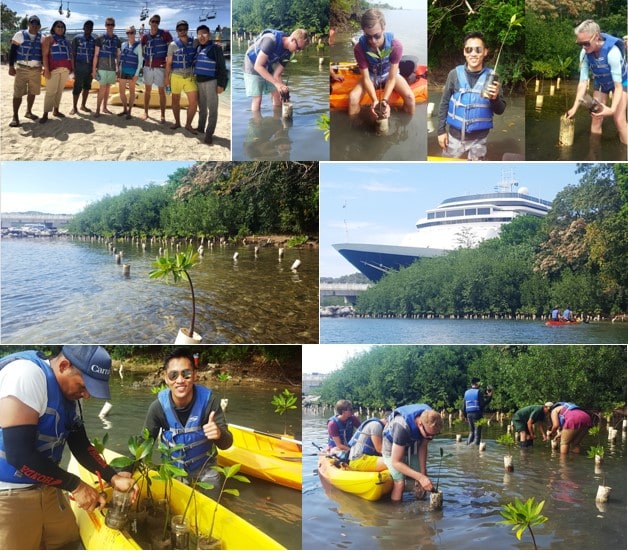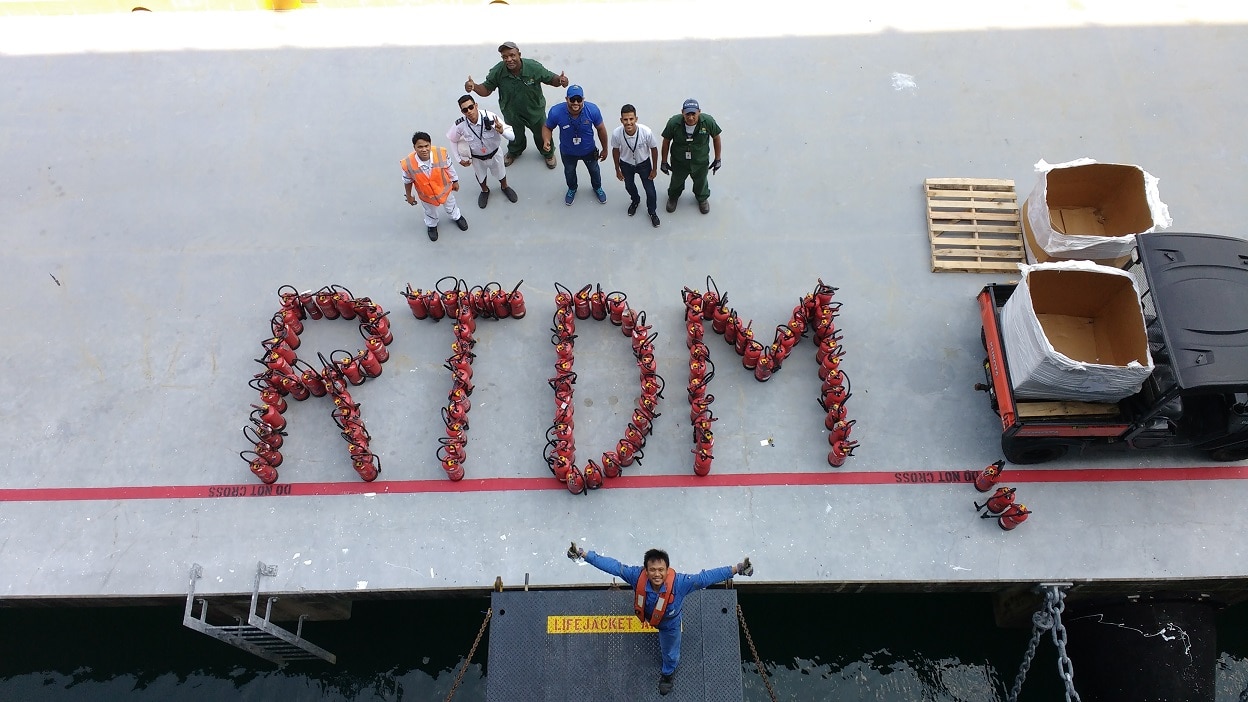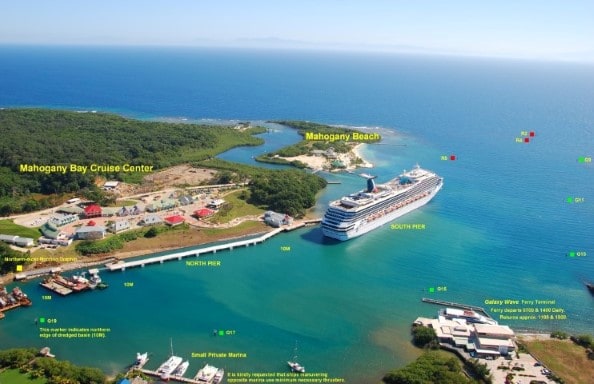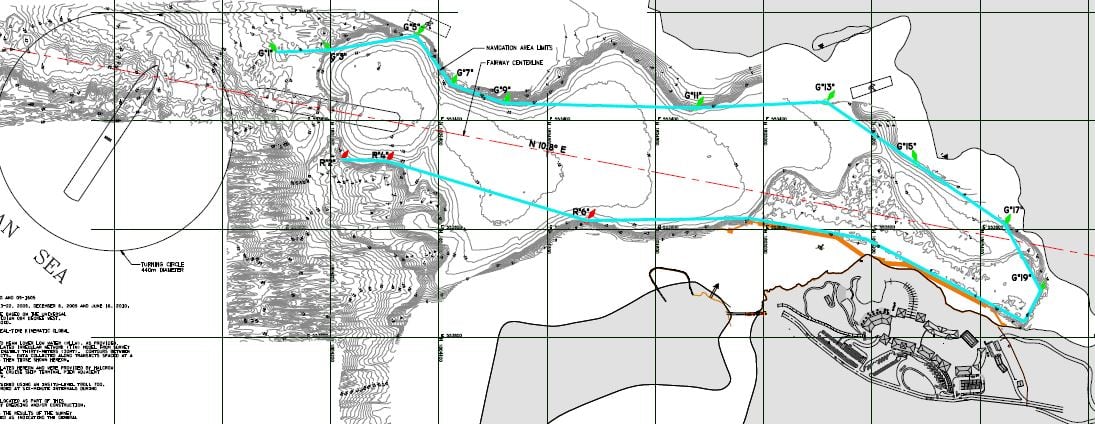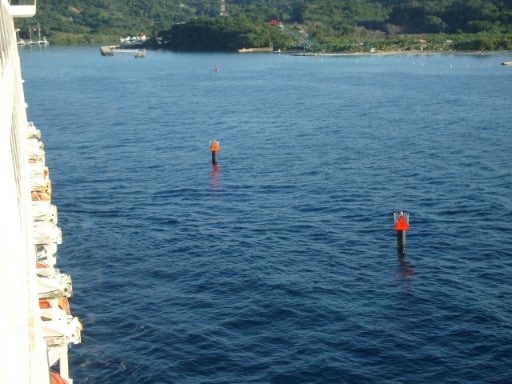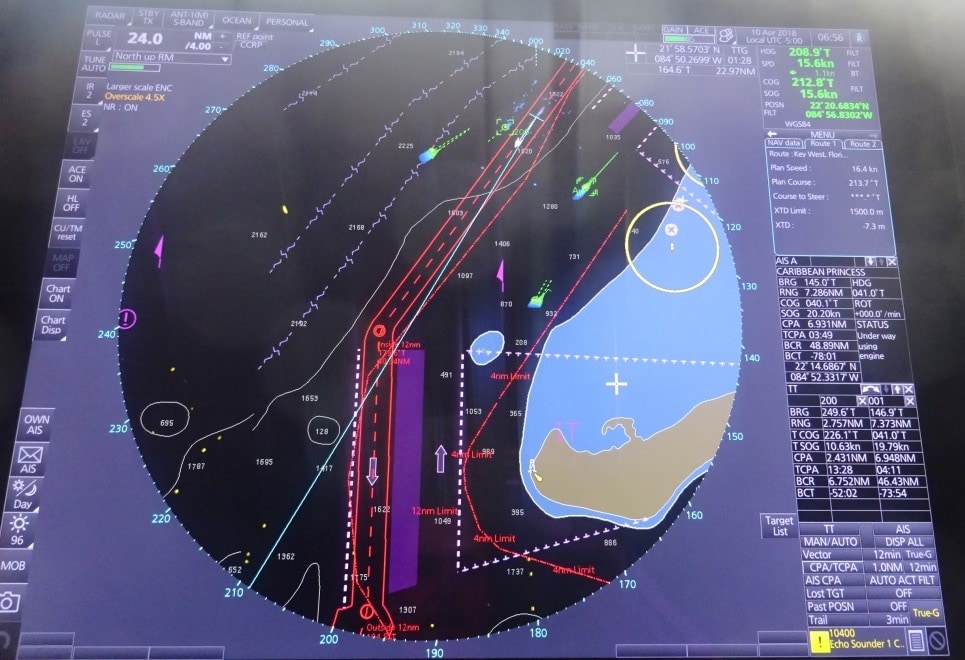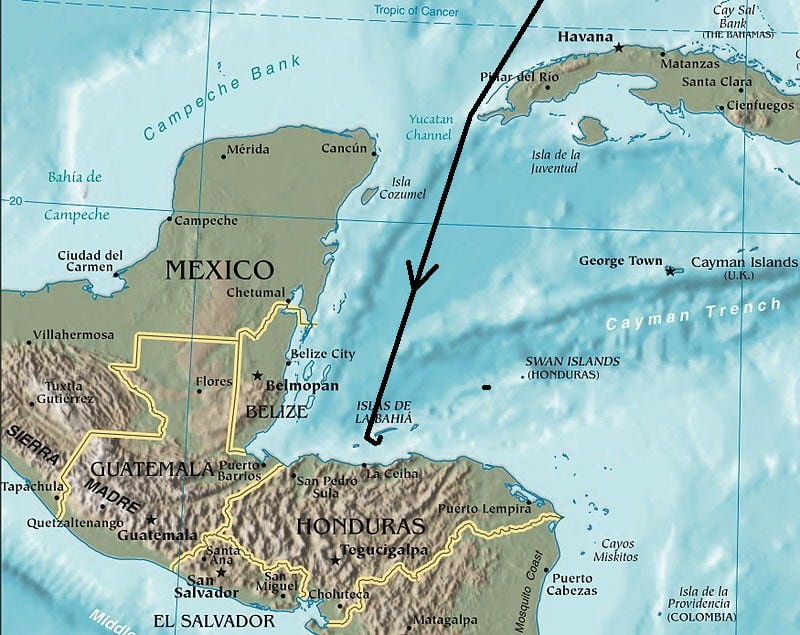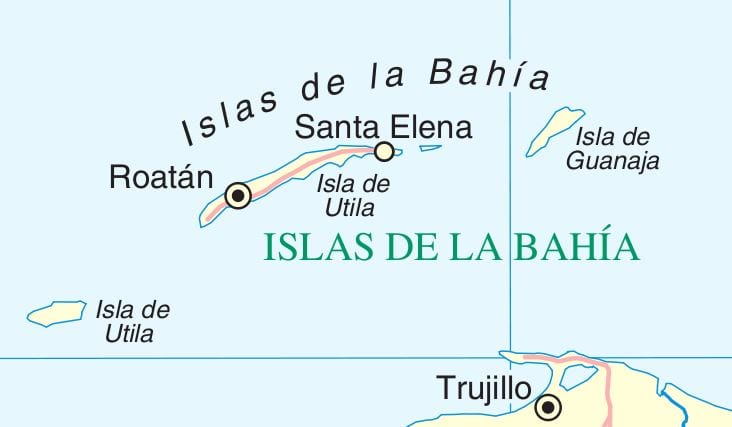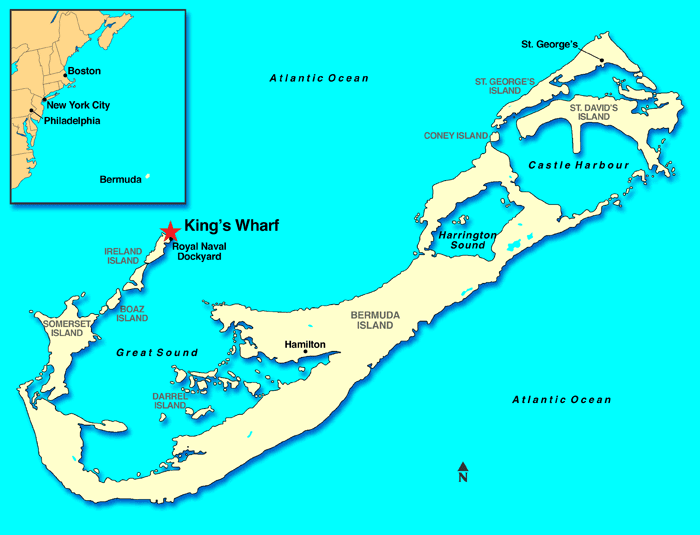
The Island of Bermuda. It almost looks as it consists out of two volcanos that blew up and left craters full of water.
Bermuda has the form of a sort of a figure 8 shape, caused by two large areas of water, surrounded by land. In the south there is the Great Sound, to the north Castle Harbor and then in the middle a small lake called Harrington Sound. The main settlements on these pieces of land are all built in the lee of a little bit of elevated land. St. Georges to the North and Hamilton to the south. Kings wharf and Elizabeth wharf face the Great Sound and are the most exposed. There is a good reason for the docks to be located here; as Navy –battle-ships normally have a considerable draft and it made the area around Hamilton, the capital, not suitable for those ships, hence the navy port was built in a deep water area. As explained in previous blog, the local authorities have now banned any ship over 740 feet in length from going to downtown and thus most cruise ships now dock at this old navy yard. From there taxis, a local ferry and shuttle buses will take everybody to downtown or anywhere else people want to go.
Although the North west side of the island looks as if it is just sea, it is not as there is a large reef extending far into the deep sea area. That means that every ship visiting Bermuda has to enter through the East Side pilot station and then go for a long distance through the reefs, either to Kings Wharf or to Hamilton. When the British Royal Navy was still there, ships with too much draft, such as our ss Rotterdam V, had to anchor in the Great Sound and then use local tenders to bring the guests ashore. Smaller ships such as the Statendam IV, and the Veendam could proceed to the docks at Hamilton.
Thus we picked up the pilot at 06.00 hrs. sailed the long route through Bermuda and were then docked a few minutes after 8 AM. as the captain had wisely decided to swing on arrival in case there would be a lot of wind picking up later in the day. The strong winds are officially forecasted for tomorrow but with a flat island such as Bermuda you can never tell how fast an approaching weather front will travel if there is no geographical hindrance at all. So we were all set in case this would happen but although the wind breezed up, it did not go above a wind force 5 (19 – 20 knots) and the sun was brightly shining. Providing the guests with a beautiful day in a port where a lot of customs and tradition out of the days of the British are still in place. Bermuda is part of the British Commonwealth and the British Queen is the head of state and is represented by a governor. But that is more a ceremonial function as the island has its own government.
I did not see much of the island as I had a full day going with drills and assessments. This location is an excellent place to lower lifeboats and the ship combines all drills in one big scenario so the crew only has to show up once. Starting with a fire drill, followed by an assembly drill followed by the general emergency drill. In the same way as the guests are trained and advised when they join the ship. So I put the Bo ‘sun store on fire with a (fake) sailor inside who had slipped over a drum with chemicals and was thus out of action. Fighting a fire is a standard routine and does not cause our crew much of a challenge. What we are training on are the details and that invariably means communication. Because I operate outside the ships teams, they never know what I will cook up for them and what will be sprung upon them and then a good drill only works if the communication perfect. And that is not easy as the Bo ‘sun store is a dead zone. Not transmission signals get in or out due to the strong steel bulkhead separating this potentially dangerous area from the rest of the ship.
With the “chemical sailor” the challenge is for the rescue team, those who get the sailor out of the fire area, to deliver a comprehensive report to the medical department so they can treat accordingly. In the heat of the battle that is not always so simple.
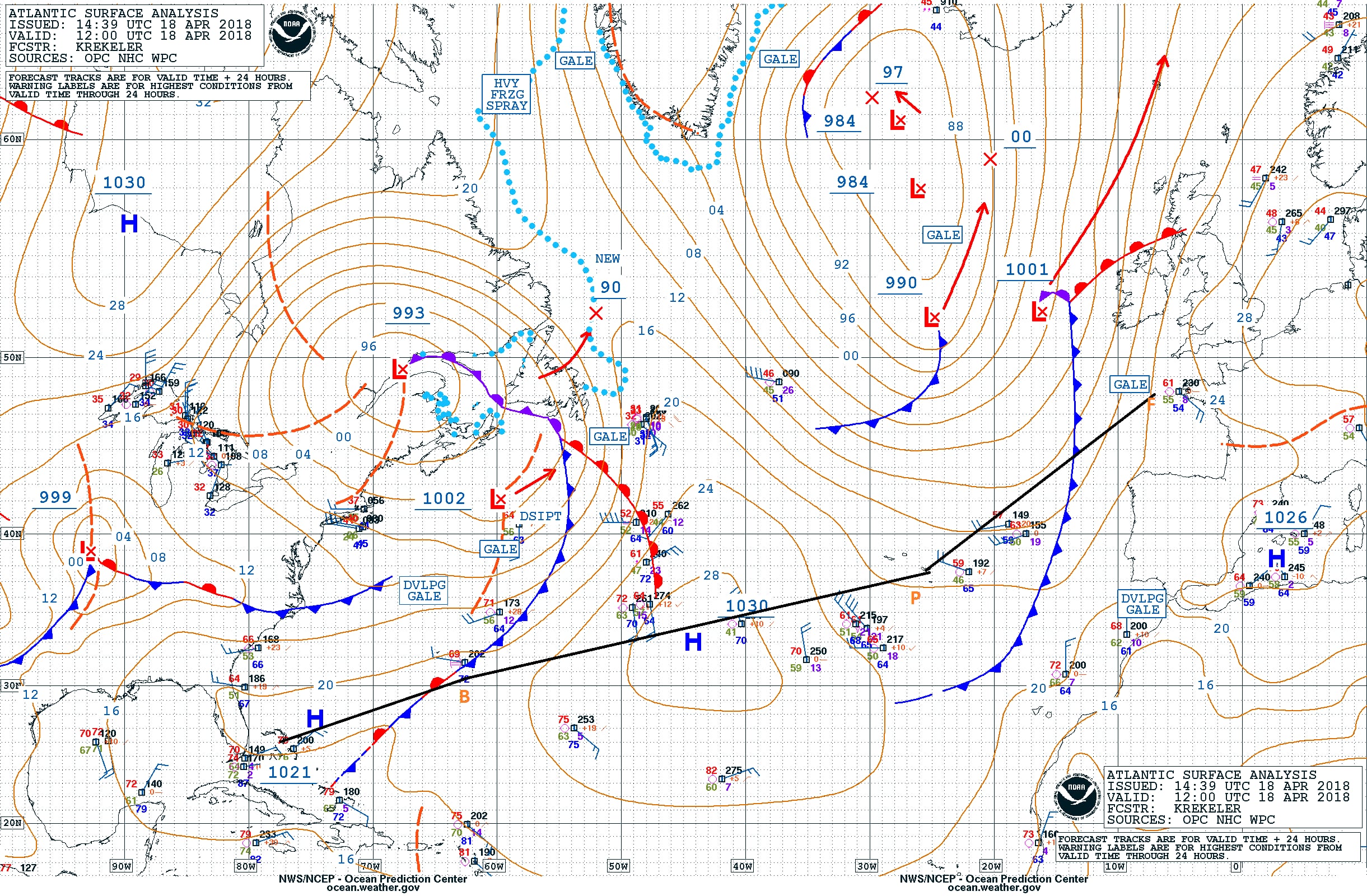
The weather chart for the coming 24 hrs. In orange B = Bermuda , P = Ponta Delgada then the course goes up to Brest, France. To the north of us all sorts of things are happening, but on our course line it is quiet. At least for the time being.
Tomorrow and the 3 days after that we will be at sea; sailing eastwards towards Ponta Delgada on the Azores. We are expecting numerous weather fronts to come over but as we are on a southerly crossing it remains to be seen how much those weather fronts might affect us. For the first day it looks that we will be nicely in between.
